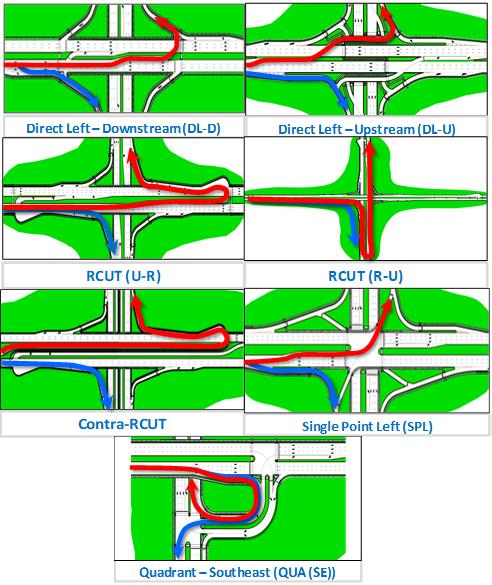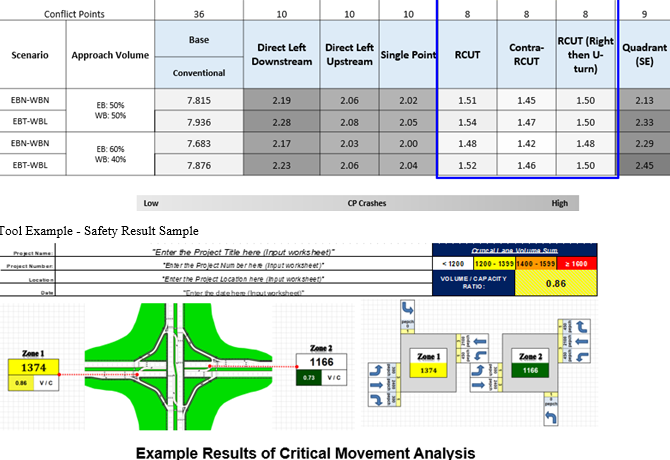Grade-separated intersections increase the capacity of two non-freeway roads by elevating two or more approaches, thereby removing conflict points. Over 150 grade-separated intersections exist today in North Carolina, with most designs utilizing interchange style ramps. The traditional interchange configurations have significant limitiations in arterials where right of way is limited, freeway speeds are unsafe, and additional access is needed for bicycles, pedestrians and driveways. Additionally, the traditional Crash Modification Factor (CMF) preliminary safety analysis for intersections relies on pre-existing sites with a crash history to predict relative crash performance and the new designs are not yet built to develop these factors.
The purpose of this study was to develop the operational and safety performance evaluation methods for grade-separated intersection designs and provide quantitative results for various trafic volume conditions. The outputs of this study are expected to be used as guidance for engineers and planners in choosing an appropriate design during the planned stage of a project. This study invesitgates the operational and safety effects of seven grade-separated intersection designs: direct left-downstream (DL-D), direct left-upstream (DL-U), single point left (SPL), three types of restricted cross U-turn (RCUT (U-R), RCUT (R-U), and contra-RCUT), and quadrant - Southeast (QUA (SE)) intersections are already available in CAP-X for alternatives analysis and do not fully grade separate the two arterial through movements for future conversion and therefore were not included in this study.

This project developed seven new grade-separated intersection styles for the upper or lower half of the intersection design, resulting in over 40 new intersection styles for the upper or lower half of the intersection design, resulting in over 40 new intersection designs in combination. These designs were analyzed for operational and safety performance with the creation of two new computational methods. The overall best design is entirely site specific and the planning level operational and safety models developed in this project can be used to identify preferred alternatives for a given volume condition.

